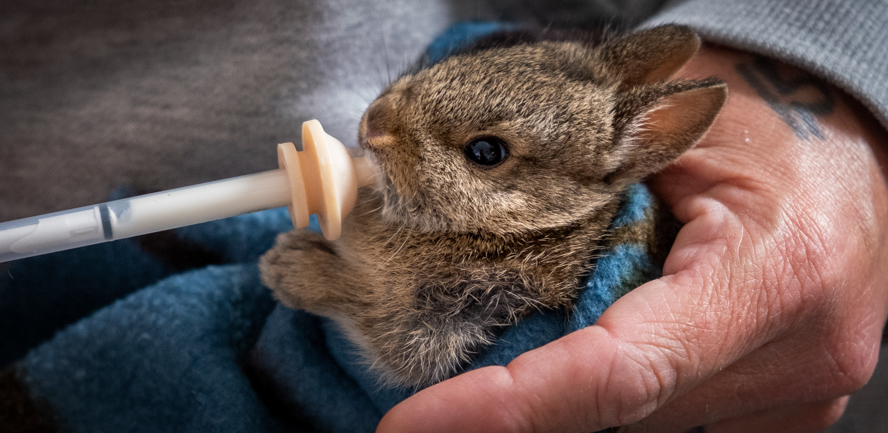Professional Insights on Burlington Animal Control for Pet Dog Owners
Wiki Article
Efficient Wild Animals Removal Approaches for a Peaceful Home Setting
In the search of keeping a serene living area, property owners usually face the challenge of wild animals breaches, which can disrupt the harmony of their atmosphere. Executing reliable wildlife elimination techniques requires a nuanced understanding of both humane exclusion strategies and preventative measures.Identifying Common Wildlife Intruders
Recognizing common wild animals trespassers is a crucial initial step in reliable wildlife monitoring. Comprehending the particular species that regularly infiltrate residential and commercial spaces makes it possible for homeowner and wildlife specialists to apply targeted strategies for minimizing prospective damages and health risks. Usual burglars frequently consist of raccoons, squirrels, bats, and numerous species of birds and rats, each bringing unique difficulties.Raccoons, for example, are known for their dexterity and can cause considerable structural damages while seeking food or shelter. Squirrels, with their tendency for gnawing, can harm electrical circuitry, positioning fire risks. Bats, while beneficial for regulating insect populaces, can end up being an annoyance when they roost in attics, potentially spreading illness such as histoplasmosis. Birds, including pigeons and sparrows, usually develop unhygienic problems with their droppings, bring about structural deterioration and health and wellness worries. Rodents, such as rats and computer mice, are notorious for their rapid recreation and capability to infiltrate little openings, presenting severe health risks due to their ability to spread illness.
Humane Exclusion Methods
Understanding the common wildlife trespassers is the structure upon which reliable exemption strategies are constructed. Recognizing types such as birds, raccoons, and squirrels aids in designing gentle exclusion methods tailored to particular behaviors and entrance approaches. Exclusion is a preventative approach targeted at denying wildlife accessibility to homes and homes, thus minimizing the requirement for even more intrusive steps.The cornerstone of humane exclusion entails sealing potential entry points. Additionally, ensuring that doors and home windows are safe and secure, and that screens are intact, can better discourage entrance.
Installing ultrasonic devices or motion-activated lights can discourage nocturnal wildlife. These exemption techniques not just secure the home environment but also appreciate the wildlife, enabling them to prosper in their natural environments without harm.
Safe Trapping Approaches
When exclusion techniques are inadequate, safe capturing approaches come to be a required choice in wildlife monitoring. Capturing, when implemented correctly, provides a humane and efficient means of attending to an instant wildlife trouble while guaranteeing minimal tension and damage to the animal. This method calls for an understanding of both the behavior of the target types and the moral factors to consider associated with wildlife handling.The primary step in risk-free capturing involves selecting the suitable trap type. Live catches, such as cage traps, are typically recommended as they enable for the capture and release of the pet in other places. These catches need to be inspected regularly to stop unnecessary stress and anxiety or injury to the recorded wildlife. It is crucial to comply with regional policies regarding trapping and moving to guarantee conformity with legal requirements and wildlife conservation principles. burlington wildlife rescue.
In addition, bait selection and positioning are crucial elements in making certain effective trapping. Bait must be chosen based on the nutritional choices of the target types and tactically positioned to entice the animal into the catch. When caught, the animal must be taken care of with treatment, using protective gear if necessary, to facilitate safe transportation and release, therefore keeping a balanced ecosystem and a relaxed home environment.
Precautionary Home Modifications
While risk-free capturing approaches address prompt wild animals problems, lasting remedies frequently require preventative home modifications to discourage pets from entering human spaces. Carrying out these alterations not just enhances the security and comfort of your living environment yet additionally reduces the probability of future wildlife invasions.A vital aspect of preventative techniques is sealing prospective entrance points. This entails inspecting and fixing any type of spaces or splits in the foundation, walls, and roofing, as these can become accessibility paths for wild animals. Setting up chimney caps and repairing busted vents can prevent birds, bats, and rats from obtaining entrance. In a similar way, protecting doors and home windows with climate removing and harmonize displays includes an added layer of protection.
Landscape design adjustments can additionally work as effective deterrents. Trimming tree branches that overhang the roofing system and eliminating debris piles can remove routes and habitats that attract wildlife. Preserving a tidy lawn by protecting garbage can and compost heap discourages scavengers such as marsupials and raccoons.

When to Call Specialists,##.
Professional treatment comes to be essential in scenarios where wildlife problems surpass the range about his of DIY solutions. Homeowners might run into circumstances where the intricacy or danger of the wild animals issue requires expert experience.
Furthermore, infestations involving safeguarded or endangered species require a nuanced method to follow lawful laws. Specialists are equipped with the required permits and understand the legal frameworks governing the handling of such types. This makes sure that elimination is carried out morally and within lawful limits.

Finally, when wildlife presents a relentless trouble despite repeated do it yourself efforts, professional services can supply extensive assessment and long-lasting services tailored to stop recurrence - burlington animal control. Their proficiency not only deals with the immediate problem yet likewise safeguards the home atmosphere in the future
Final Thought
Executing effective wildlife elimination techniques is necessary for keeping a relaxed home environment. Together, these techniques produce an unified living area cost-free from wild animals disturbances.
These exclusion techniques not only protect the home setting yet likewise respect the wildlife, permitting them to thrive in their you can check here natural environments without harm.
Executing efficient wild animals elimination methods is necessary for maintaining a calm home atmosphere.
Report this wiki page